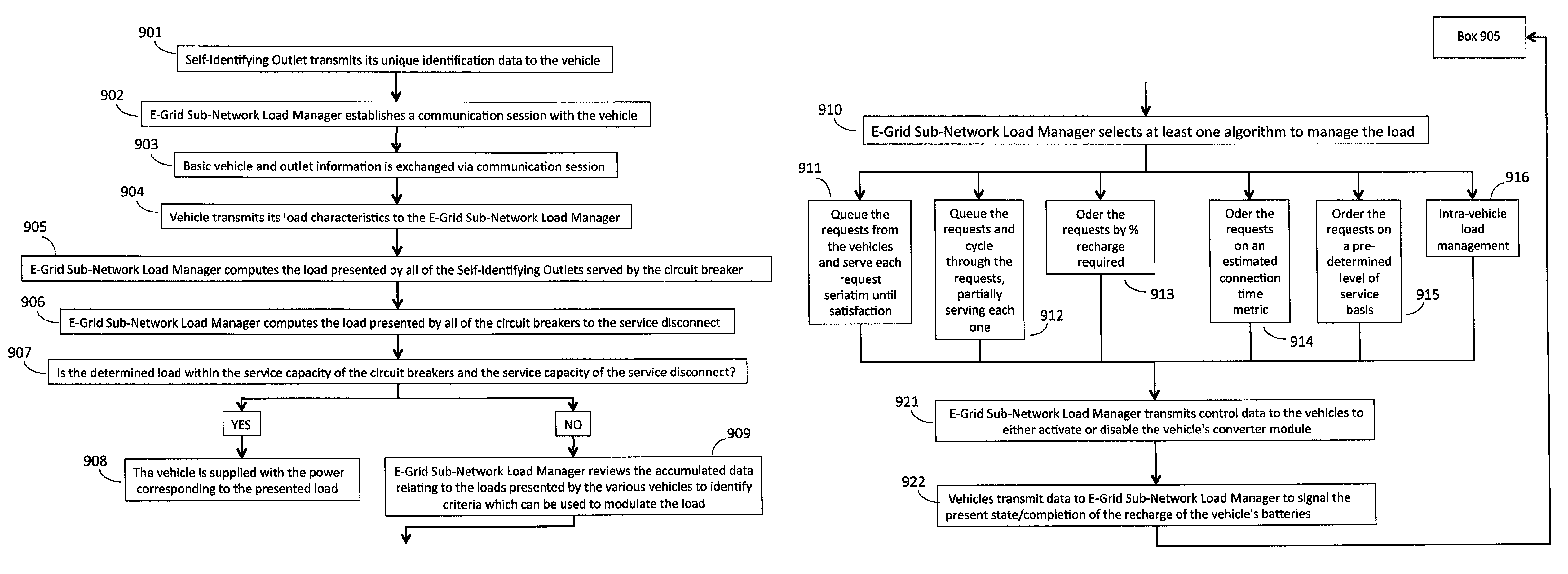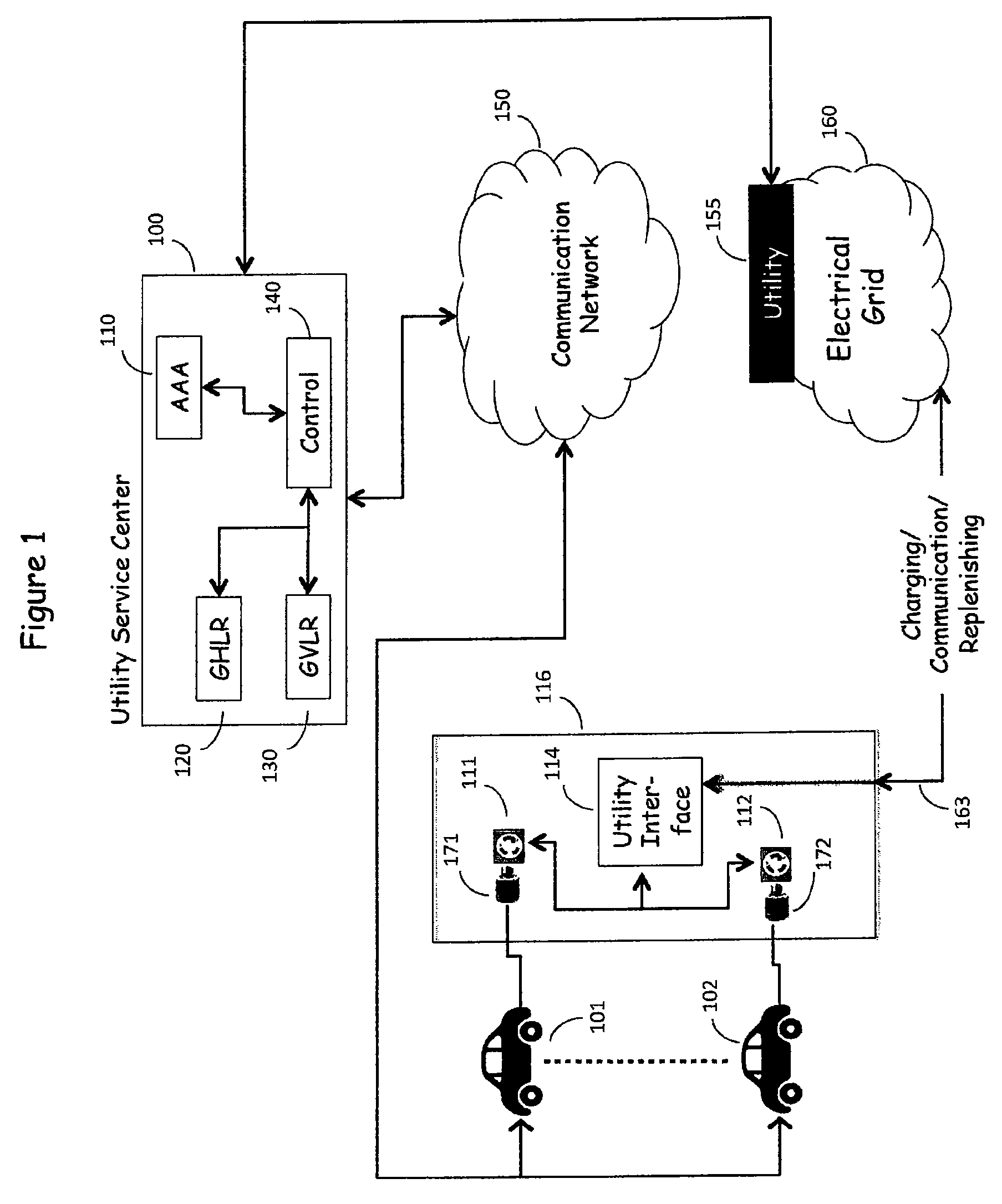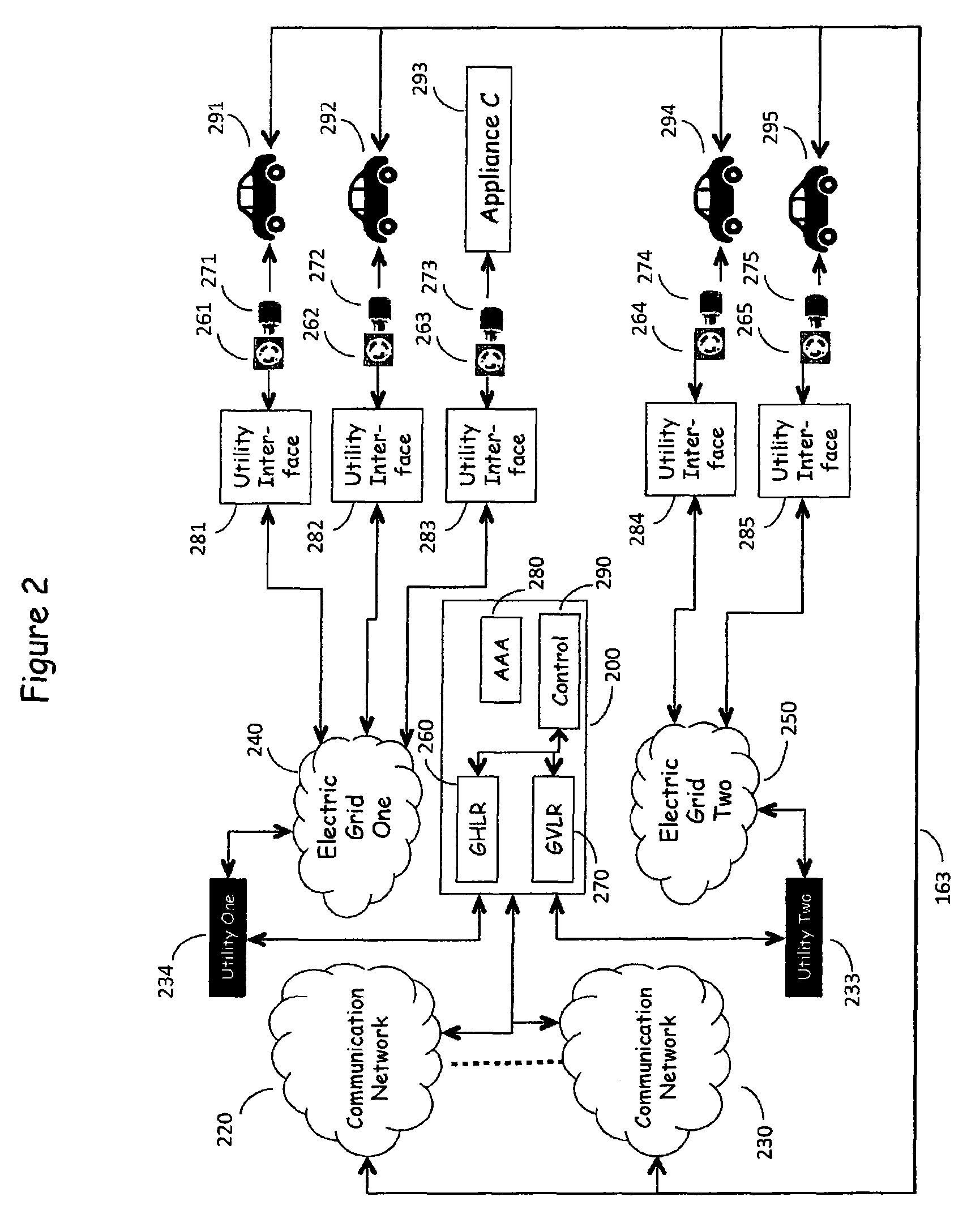Sub-network load management for use in recharging vehicles equipped with electrically powered propulsion systems
a technology of electrically powered propulsion system and sub-network load management, which is applied in the direction of charging stations, electric vehicle charging technology, transportation and packaging, etc., to achieve the effect of enhancing the operation of the e-grid sub-network load manager
- Summary
- Abstract
- Description
- Claims
- Application Information
AI Technical Summary
Benefits of technology
Problems solved by technology
Method used
Image
Examples
utility embodiment
Multi-Utility Embodiment
[0045]FIG. 1 is, in reality, a multidimensional network in which N electric utilities are served by M Electric Grids with corresponding communication networks, as shown in FIG. 2.
[0046]Electric Grids 240, 250 shown in FIG. 2 represent the source of electric power, as provided by multiple utility companies which serve a wide geographic area and provide electric power to a multitude of customers via utility interfaces 281-285. The utility interfaces 281-285 serve to measure the energy consumption by the various outlet connected loads, such as Vehicles 291-295. These elements represent the existing, present day electric power delivery infrastructure as described above. Electric power traditionally flows from the Electric Grid 240, 250 to the utility interfaces 281-285 and thence to the customer's loads—Vehicles 291-295 via plug 271-275-outlet 261-265 combinations, but power also can flow in the reverse direction, from the vehicular battery banks of Vehicles 291-...
PUM
 Login to View More
Login to View More Abstract
Description
Claims
Application Information
 Login to View More
Login to View More - R&D
- Intellectual Property
- Life Sciences
- Materials
- Tech Scout
- Unparalleled Data Quality
- Higher Quality Content
- 60% Fewer Hallucinations
Browse by: Latest US Patents, China's latest patents, Technical Efficacy Thesaurus, Application Domain, Technology Topic, Popular Technical Reports.
© 2025 PatSnap. All rights reserved.Legal|Privacy policy|Modern Slavery Act Transparency Statement|Sitemap|About US| Contact US: help@patsnap.com



